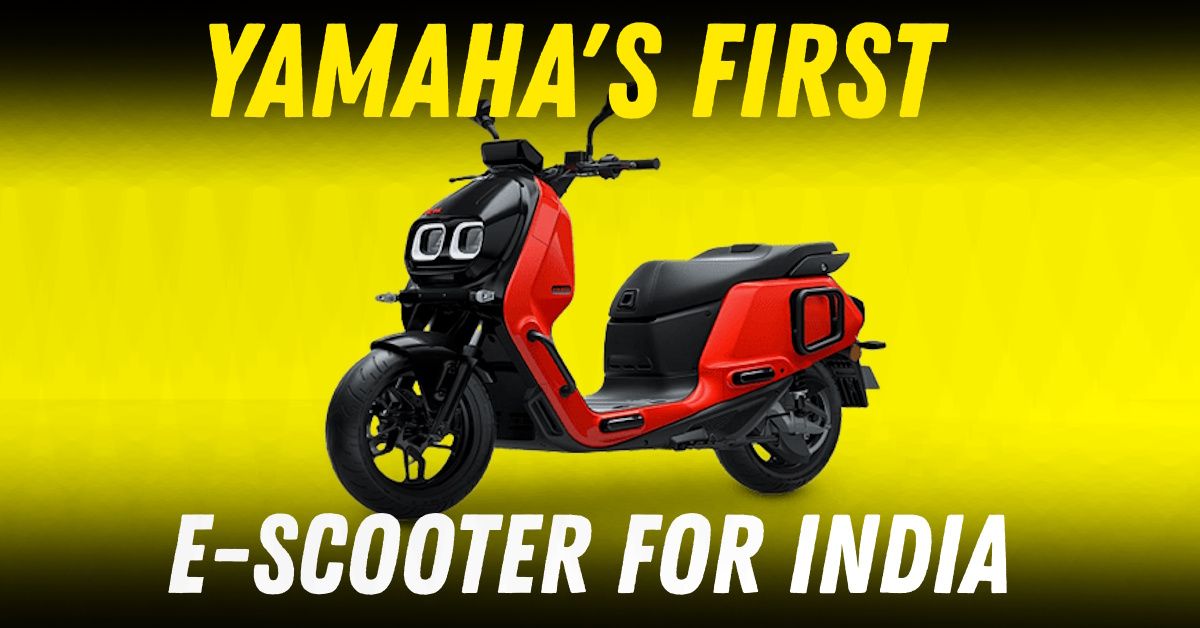Yamaha’s River Indie-Based Electric Scooter Spotted On Test


Yamaha’s foray into the electric two-wheeler market is gaining momentum. The company’s upcoming electric scooter, based on the River Indie platform, has been spotted testing in Bengaluru, confirming that its partnership with the homegrown startup is now entering a decisive phase. The camouflaged prototype, internally codenamed RY01, marks Yamaha’s most serious attempt yet to enter the mass-market EV segment in India.
At first glance, the scooter shares several components with the River Indie, but a closer look reveals Yamaha’s design language making its mark. The 14-inch wheels and the 6-inch colour LCD display placement carry over from the Indie. However, the redesigned body panels give the test mule a distinct personality.
Yamaha appears to have completely reimagined the rear section. The tail-lamp has been repositioned higher than the Indie's and is flanked by side panels that now expose more of the rear wheel and suspension setup. These changes add a sportier edge, staying true to Yamaha’s DNA.
The front has undergone significant reworking too. The apron not only gets a new layout but also a different wraparound treatment. A vertically stacked twin-LED headlamp setup replaces the Indie's unit, giving the scooter a sharper and more focused face.
This electric scooter is a direct result of Yamaha’s strategic investment in River earlier this year. Rather than a loose alliance or joint venture, Yamaha has taken a distinctive route. It has retained full control over the project but outsourced the execution, that is, engineering, development, and manufacturing, to River.
This division of roles brings the best of both worlds. River’s agility and expertise in the electric mobility space is matched by Yamaha’s engineering support from its global teams across Japan, Europe, and the US. For Yamaha, this is also a pivot away from the low-speed EVs it has tested in Europe, towards a performance-focused product more in line with its global brand image.
Under the skin, Yamaha’s electric scooter is expected to carry over much of the River Indie’s proven hardware. That includes a 6.7 kW peak power motor mounted in the middle, producing 26Nm of torque and delivering a top speed of 90kmph. A 4 kWh battery powers the setup and is claimed to offer a range of 161km under Indian driving conditions.
Three riding modes—Eco, Ride, and Rush—give users the flexibility to prioritise efficiency or performance. The chassis also benefits from the River Indie’s robust build: telescopic front forks, disc brakes at both ends with a combined braking system, and those tall 14-inch wheels that make a difference in real-world ride comfort.
Yamaha is targeting a production window between July and September 2025, with the official launch likely to follow before the end of the year. Manufacturing will take place at River’s facility in Bengaluru, and from the outset, Yamaha plans to export this model to 11 international markets alongside the domestic rollout.
The product is positioned to rival premium electric scooters from Ola, Ather, TVS, and Bajaj. With the EV segment accounting for about six percent of India’s two-wheeler sales and showing consistent growth, Yamaha’s entry comes at a time when the market is ripe for new contenders.
More than just a new scooter, Yamaha’s upcoming launch signifies a vote of confidence in India’s EV startup ecosystem. By choosing to develop a global product on Indian soil through a local partner, Yamaha is setting a precedent that could inspire more such collaborations. In a market that is both cost-sensitive and increasingly tech-savvy, partnerships like this may prove essential in driving the next wave of electric mobility.